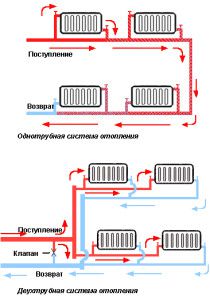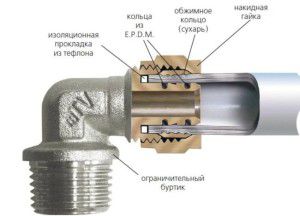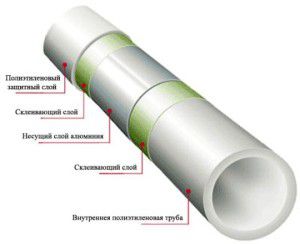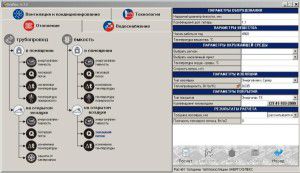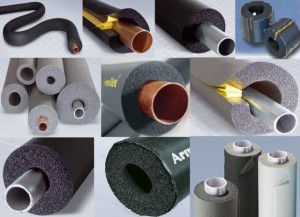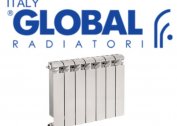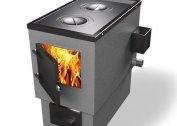To organize a heating system, it is necessary to take into account all the nuances - boiler characteristics, building properties, regional climatic features and pipeline parameters. Designing the latter is the key. The operation of the whole complex will whistle on how correctly the pipelines of the heating systems were designed: calculation, installation, requirements and pipe diameter.
Purpose of pipelines and their characteristics
Before starting the calculations and the choice of materials, it is necessary to find out the operational features of the heat mains. Their main task is to deliver the coolant from the heating boiler (distribution unit) to radiators and batteries.
At first glance, the installation of the transport line is not difficult. It is enough to take into account the specifics of the material of manufacture, install compensators for heating pipes in the right places, and ensure tightness. But in fact, after such an unprofessional approach, problems can arise during work. To avoid them at the design stage, you need to know in advance the basic requirements for the organization of pipelines:
- Pressure rating and heating temperature. Pipes must withstand the maximum value of these parameters without deformation and changes in their performance;
- Take into account the features of the selected scheme - one-pipe or two-pipe. To carry out repair work in certain areas, jumpers in the heating pipelines are necessary. In particular, when strapping radiators;
- External factors - exposure to direct sunlight, the possible influence of negative temperatures and the quality of the coolant. To preserve the initial throughput, flushing of the heating pipelines is periodically performed;
- Observe installation rules - the angle of inclination, the distance between the heating pipelines and provide for the presence of shutoff valves. The presence of a safety group to compensate for excessive pressure and thermal effects from the coolant.
Where to start the design of heat mains in an autonomous system? First, a scheme is drawn up - one-pipe, two-pipe, collector. Then you need to perform a complete calculation of its characteristics. First of all, choose the thermal operating mode, hydraulic resistance and optimal pressure. Based on the data obtained, pipes are selected.
For systems with natural circulation, large diameter pipes should be installed - from 24 mm and above. Thus, it is possible to compensate for the friction of the coolant on the inner surface of the line.
Pipeline material
In order to correctly calculate the diameters of heating pipelines, one should know the features of the material of their manufacture. Currently, polypropylene pipes, which are characterized by relatively large thermal expansion, are most often used for installation.
The determining factor is the obtained system parameters. They must correspond to the performance of the pipes - pressure, temperature, etc. Consider the most common pipeline manufacturing materials based on their characteristics.
Metal-plastic heating pipelines
Until recently, they were popular in organizing pipelines.Their advantages are affordable cost, easy installation without any special requirements for tools.
However, over time, problems typical of these types of pipelines were noticed:
- High requirements for the quality of phytin compounds - these elements are most often out of order;
- Sensitive to pressure drop and water hammer. If the installation of heating pipelines was performed without following the rules, the likelihood of a rush increases.
Therefore, most often a different type of pipe is used for installation in the heating system.
Polypropylene for the pipeline
Differs from metal-plastic material of manufacture and method of connection. For this, welding of heating pipelines using a special soldering device is used.
Highways made from these pipes have the best operational characteristics and are free from metal-plastic flaws. For the consumer, the total cost of the pipelines is also important - polypropylene and connecting components are considered the most affordable option on the market.
The features of polymer pipes include:
- Different degrees of expansion of plastic and reinforcing sheath (aluminum or fiberglass). It is leveled by compensators for heating pipelines;
- Mandatory adherence to welding conditions, depending on the type of pipe and its diameter;
- Possibility of bends to minimize connecting nodes. For products with a cross section of 8 to 32 mm, it is equal to 8 diameters.
For reinforced polypropylene pipes that are used in heating, it is necessary to clean the end face of the reinforcing layer before the soldering process. Compliance with this rule is mandatory.
Before flushing the polymer heating pipelines, you need to find out the possible effect of the composition of the liquid on the material for the manufacture of highways.
Steel heating pipes
Currently, it is rare to find steel pipes in heating. This is due to the complexity of their installation and corrosion processes when exposed to water. For welding of heating pipelines, a special apparatus will be required, as well as certain skills in its operation.
It is important when calculating the pipelines of water heating systems to take into account the wall thickness, which is much larger than that of polymer analogues. As an alternative to welding, a threaded joint can be used. But it is less reliable than welded.
The specifics of installing steel pipes is as follows:
- They withstand great pressure up to 16 atm. In this case, the fracture pressure can reach 50 atm;
- Calcium deposits periodically accumulate on the inner surface. Therefore, it is necessary to regularly flush the heating pipes;
- In the presence of an electric boiler, the entire trunk is necessarily grounded;
- To protect against rust, it is necessary to coat the pipes with paint.
Steel lines are best established in centralized heating systems. They withstand critical water hammering, and subject to maintenance rules, a low rate of formation of the corrosion layer is observed.
Some polymer pipes are destroyed by exposure to sunlight. Flush mounting is recommended for them.
Calculation of the diameter of the pipeline
For accurate calculation of pipelines of water heating systems, it is recommended to use special software systems. When making the main parameters, they will give the most accurate result. Normal operating conditions will be taken into account, and critical pressure and temperature will be calculated at which the integrity of the line will be preserved.
An approximate calculation can be performed independently. To do this, just use the formula:
D = √354 * (0.86 * Q * Δt) / V
Where D - pipe diameter in cm,Q - the value of the heat load on the site in the system, kW,Δt –Difference in temperature in the forward and reverse pipes, ° С,V - velocity of the coolant, m / s.
To determine the heat load, it is necessary to apply the formula.
Q = (V * Δt * K) / 860
Where V - volume of the room, m³,Δt –Difference in temperature in the house and on the street, ° С,TO - coefficient of heat loss at home. For a building with good thermal insulation, it is 0.6-09. For the average level from 1 to 1.9. With insufficient thermal insulation, it varies from 2 to 3.
The coolant speed directly depends on the heat load. These values can be taken from the table.
In practice, for the installation of heating pipelines in a private house, it is enough to choose highways with a diameter of 20 to 24 mm. It should be remembered that the cross-section of the jumpers in the heating pipelines should be less than 1 size. This is necessary to create the desired flow rate of the coolant in this section of the pipeline.
To reduce friction losses, the number of rotary units in the circuit should be minimized.
Installation of a heating pipeline
For the correct installation of pipelines in the heating system, you should first familiarize yourself with the recommendations from the manufacturer. This is important, since the rules largely depend on the material of manufacture and the influence of external factors on the highway.
The next step will be familiarization with the regulatory documentation - SNiP 3.05.01-85. It describes the installation standards - the distance between the heating pipelines, depending on the presence of the insulating layer, as well as recommendations on the number of fasteners.
| Diameter of a conditional pass of a pipe, mm | The greatest distance, m, between pipe fittings | |
| Uninsulated | Isolated | |
| 15 | 2,5 | 1,5 |
| 20 | 3 | 2 |
| 25 | 3,5 | 2 |
| 32 | 4 | 2,5 |
| 40 | 4,5 | 3 |
| 50 | 5 | 3 |
| 70,80 | 6 | 4 |
| 100 | 6 | 4,5 |
| 125 | 7 | 5 |
| 150 | 8 | 6 |
In addition, the requirements for heating pipelines during installation must be observed:
- For gravity systems, stick to the correct slope of the pipe. It should be 0.05 cm per meter. For the feed - the deviation from the boiler, for the return - to the boiler;
- In plastic highways on long sections, it is mandatory to install expansion joints for heating pipelines;
- The optimal distance between pipelines in heating is 200 mm - according to SNiP;
- It can be changed upwards if there is thermal insulation of the heating pipelines
If there are threaded connections, the FUM tape or tow is used. It is preferable to use the latter, since it does not undergo changes when exposed to high temperatures. During the welding of pipelines into the heating system, the distance from the electrical wiring and also the sewer pipes is taken into account. It should be at least 500 mm., Which is one of the main requirements for heating pipelines. For proper connection to the radiator, a jumper must be installed in the heating pipe. This is especially true for single pipe systems.
If you are installing polymer heating pipelines - it is recommended to choose components from the same manufacturer. This will solve the issue of non-matching or quality of the connecting nodes.
It is best to do the installation in summer. This will give time to fix possible problems during a trial run.
Optimization of heating piping with insulation
The period of maintenance-free operation is affected not only by the correctly calculated t diameters of the heating pipelines, but also by the adaptation of the main to the conditions of its operation. Most often, thermal insulation of heating pipelines is performed.
This precaution is necessary to protect pipes against external influences. They can be expressed in the following:
- Negative ambient temperature. During crystallization, the water in the line will begin to expand, destroying it. Correctly selected insulation thickness of the heating pipes will protect against this.It is best to use thermal heating cables with it;
- Condensation. The temperature difference between heating and the environment can lead to increased humidity on the pipes. This negatively affects their condition - especially for metal surfaces. To eliminate this, you can choose a small thickness of the insulation of the heating pipes - up to 8 mm.
Given these requirements for heating pipelines, it can be decided that it will be problematic to carry out the work of calculating the choice of material tour and installing them yourself. It is important to draw up the primary scheme, which must be entrusted to professionals. Installation issues can be resolved independently by studying the specifics and “stuffing your hand” in small sections of the pipeline.
How to choose pipes for heating? This issue can be resolved by reading the video:
